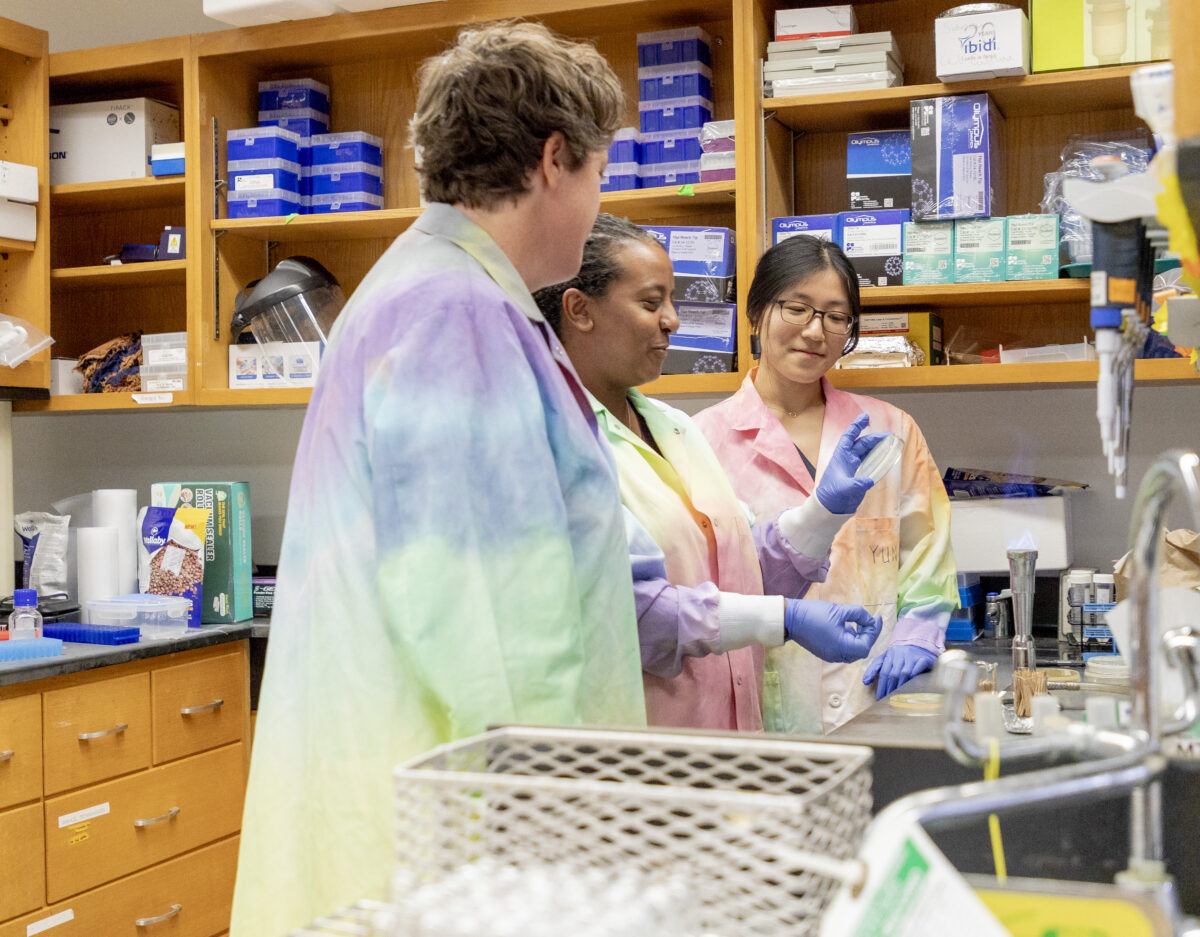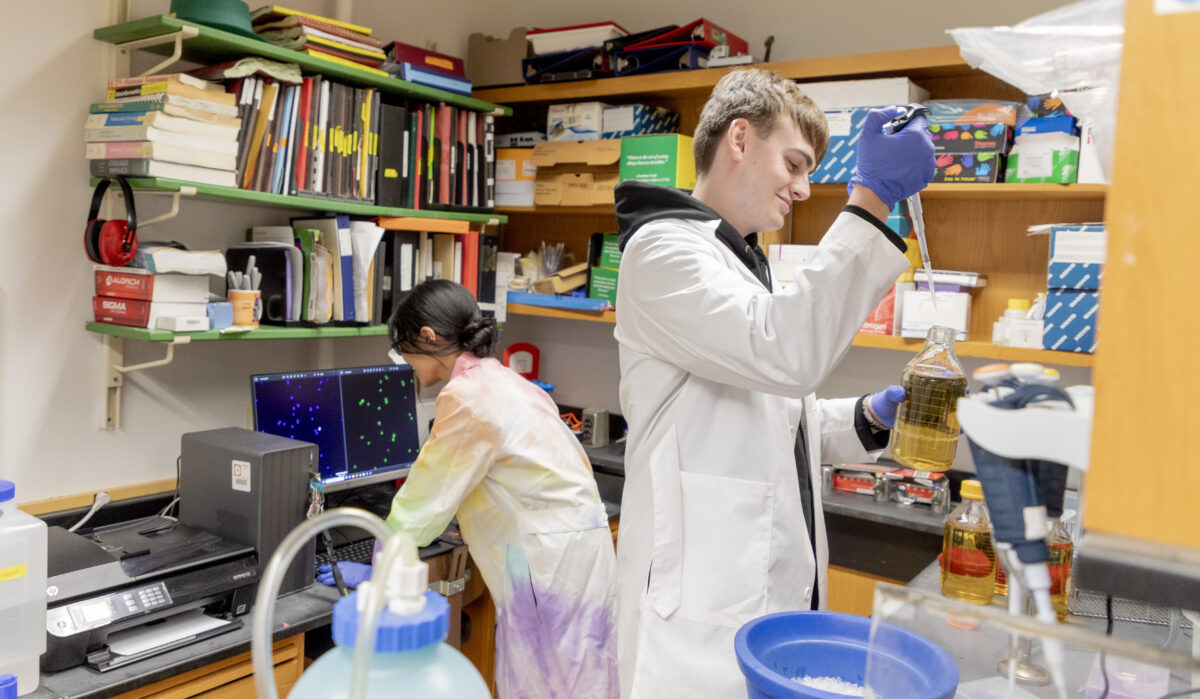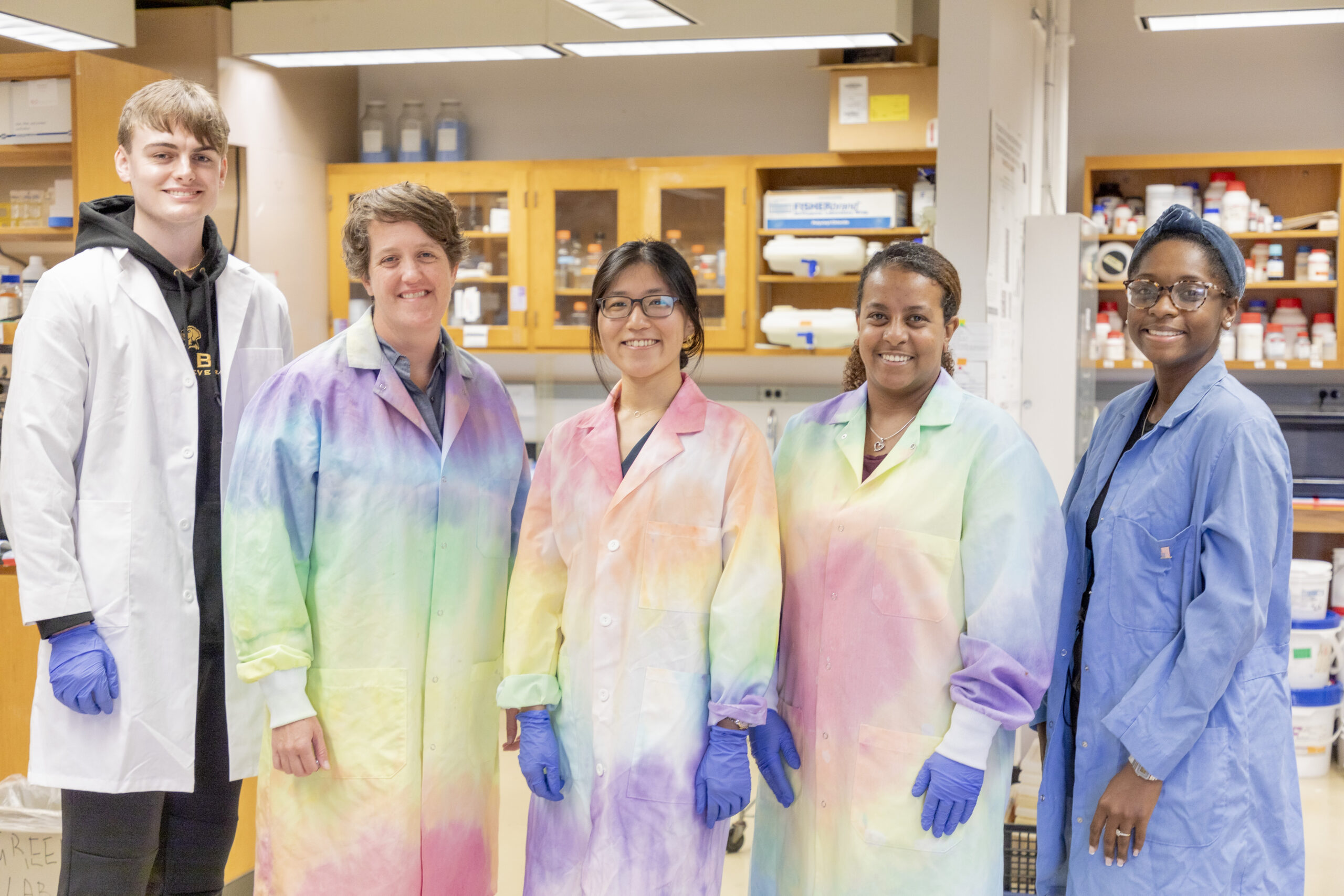Having a proper balance of proteins in our cells—the right kinds and the right number, depending on the cell type—is critical for optimal health. The proteins also need to avoid “misfolding”—contorting into shapes that prevent them from doing their jobs. It’s normal for proteins to misfold here and there, and there are mechanisms in cells to destroy aberrant proteins. But sometimes these systems fail. They also worsen as we age.
Protein misfolding “underlies a lot of diseases and aging,” says Erin Green, associate professor of biological sciences. In particular, cancer and neurodegenerative diseases like amyotrophic lateral sclerosis (ALS) and Alzheimer’s can be tied to a buildup of misfolded proteins.
In Green’s lab, she and her students are studying cellular pathways that may help maintain the balance of healthy proteins in a cell, a state called “proteostasis.” A deeper understanding of how cells protect healthy proteins and get rid of damaged ones may eventually lead to improved treatments for diseases caused by protein misfolding.
Now, a four-year, $1.2 million grant from the National Institute of General Medical Sciences will help the group build on work from a previous grant from the National Institute on Aging (NIA), and add further detail to the role of particular enzymes involved in proteostasis.

Building discovery on discovery
With the NIA support, Green’s group discovered that the enzyme Set6 is important for maintaining protein balance in cells of budding yeast, a model organism. Set6 and other proteins in the same family are closely related to human enzymes in the SMYD gene family. Set6 adds methyl groups, small molecules made up of three carbon atoms and a hydrogen atom, to the amino acid lysine in proteins. These methyl groups can affect how proteins function.
“All of the machinery in yeast is very similar to in humans, and we have lots of tools for genetic and molecular manipulation in yeast,” Green explains. “You can do the same things in human cells, but it works much more rapidly and is simplified in yeast.”
After identifying the relevant enzyme, the team found molecules they believe Set6 interacts with. Now they’d like to confirm the interactions they identified, and then explore how they are controlled and their functions—all of which is unknown.
“There’s not a single published paper on Set6. Our goal is to uncover what I think will be a new function for this set of enzymes,” Green says. “Then we can apply that knowledge to investigating whether or not any of the human proteins have a similar role in human cells.”
If there’s a match with a human enzyme, then that would open the door to further work seeking to “keep proteostasis intact longer, and potentially prevent conversion into a disease state,” Green says.

Students lead the way
Luke Mason, a third-year Ph.D. student in Green’s lab, will take a leading role in the new project. He’ll be joined by a new graduate student supported by the NIH grant. “Set6 is upregulated under stressful conditions,” particularly a lack of nitrogen, Mason says. “I’m trying to figure out the specific interactions of Set6 and what it does.”
He has also found a home in Green’s lab. “It’s an environment that’s very conducive to teamwork,” Mason says. “People are always willing to share knowledge, skill sets, and really anything to help each other out.” That support is particularly valuable when knowledge about the enzymes they are investigating is still so limited, he adds.
Winny Sun, a Ph.D. student in her fourth year with Green’s lab, will be less directly involved in the new project, but her previous work on the related protein Set4 helped pave the way for this new direction. She studies Set4 under oxygen deprivation—a different kind of stress. Sun developed techniques for working with proteins that are only detectable under stress, and now Mason will apply them to the Set6 enzyme work.

Nurturing research leaders
“Erin provides a lot of opportunities to grow as a scientist,” Sun says. One Green Lab member completed an internship at biotech firm Genentech and another traveled to France to work with a collaborator, Sun says, adding that she has had opportunities to present at NIH conferences.
Oluwaseun Kintunde ’25, biological sciences, also appreciates working with Green. After her initial interview, she remembers thinking, “This is someone who I want to continue to mentor me, because she is so easy to talk to.” She has also received mentorship from the graduate students in the lab. “I can talk to Winny about anything,” Kintunde shares.
Green prioritizes mentoring her students, and works directly with both her graduate and undergraduate lab members. She knows a research career, whether in academia or industry, comes with successes alongside setbacks, so, she says, “The idea is to send them off into the world with the skill set that they need to deal with all the challenges they may face.”
Uncovering new biology
As the team forges ahead, the overall goal is to develop a molecular understanding of how Set6 contributes to proteostasis, Green says. That includes confirming what molecules it interacts with and exploring what biological pathways it may control. The group’s discovery of the enzyme’s response to stress is especially intriguing.
“There’s a ton of open questions, and I feel like there’s a lot of new biology to uncover there,” Green says. Given the SET family proteins’ implications for prevalent diseases like cancer and neurodegeneration, she adds, “If we can define at the molecular level how it’s working in yeast, there’s a lot of applications moving forward for broadening the research.”
Tags: Biology, CNMS, GradResearch, rca-1, Research




